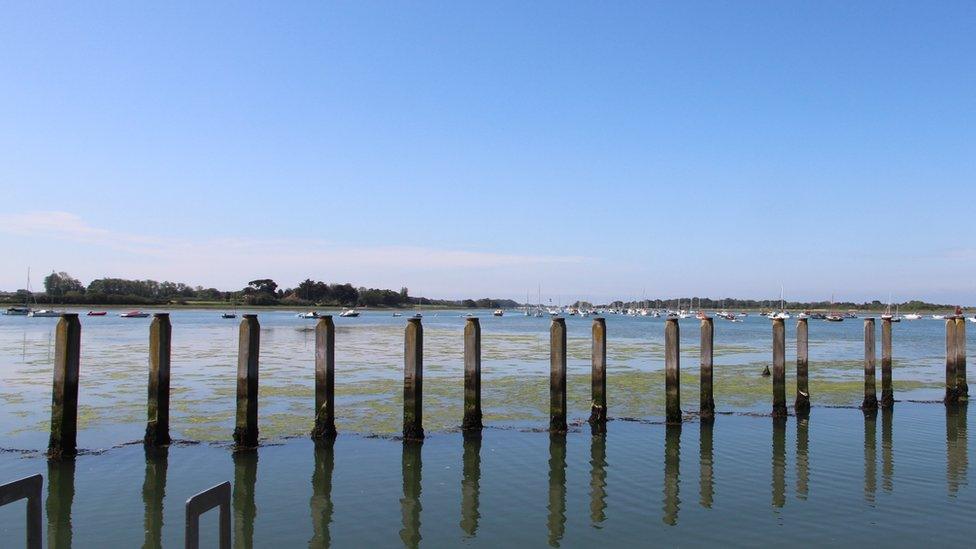Southern Water's sewage discharge app changes provokes row
- Published
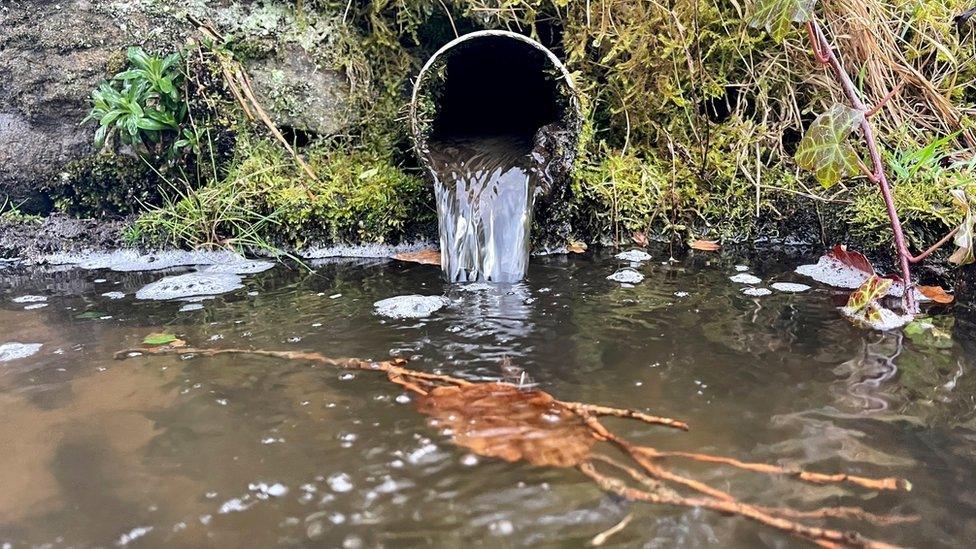
Water companies often release sewage via storm overflows
A row has broken out over changes to a water firm's app that displays details of its sewage discharges.
Southern Water's Beachbuoy tool previously automatically displayed a red flag on its map to warn bathers where it had released sewage.
But critics said the recent changes, which see factors like tidal direction considered before the map is updated, were "a manipulation of the data".
Southern Water (SW) insisted changes to the app had improved its accuracy.
Updates become even more important during periods of heavy rain, when water firms are permitted to divert untreated waste water away from treatment plants, discharging sewage straight into the environment in order to stop sewers backing up.
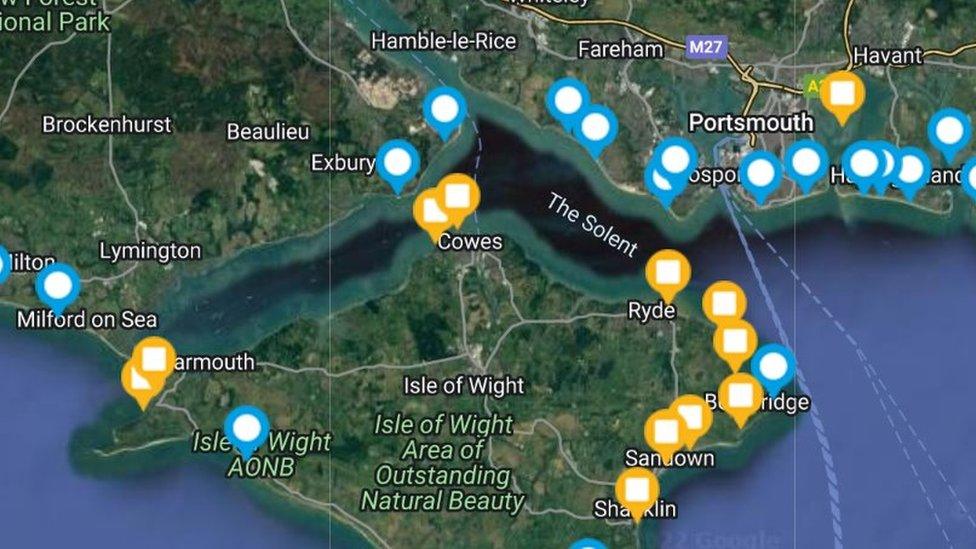
Southern Water's Beachbuoy app has a traffic light style system for flagging sewage releases
SW, which serves customers in Hampshire, the Isle of Wight, Sussex and Kent, said all the sewage data remained available on its website.
But Mike Owens, of Hayling Sewage Watch, told the BBC the firm was "trying to manipulate the situation so the press don't see any red icons".
The former software test engineer said his own analysis on one day this week indicated many beaches marked as safe to swim would have been displayed as red on the app before it was updated.
He said it was a "trust issue", citing SW's track record that includes receiving a £90m fine last year for deliberately dumping vast amounts of sewage into the sea.
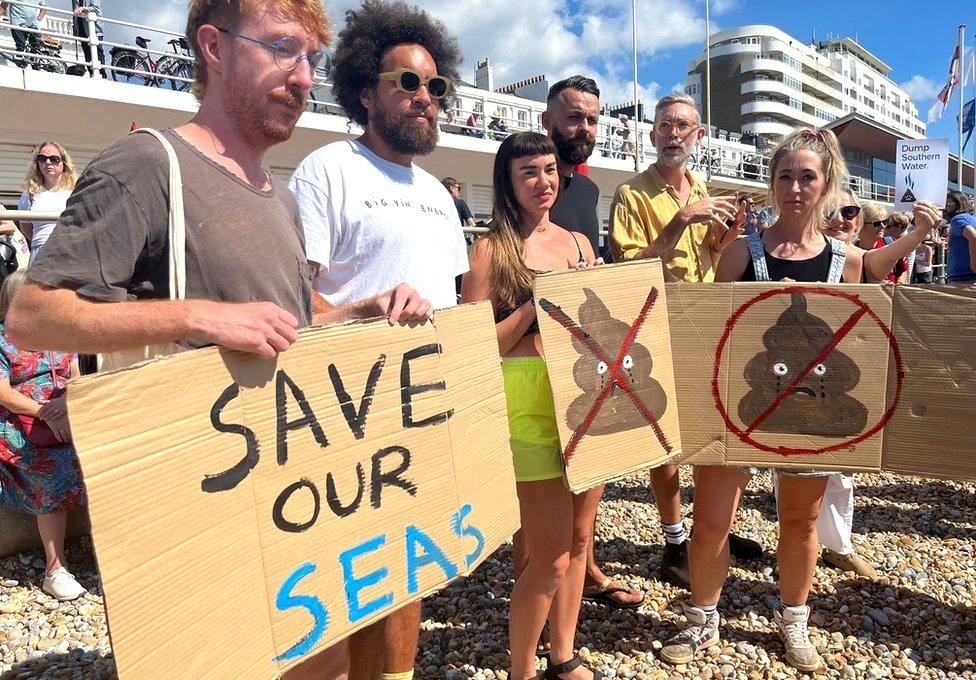
Campaigners in Sussex protested against sewage releases into the sea over the summer
Amy Slack, of Surfers Against Sewage, said her organisation was "mad" about the app changes.
"We should be able to make informed decisions about where we swim, rather than having the data manipulated before we receive the alert," she said.
An SW spokesperson said: "Beachbuoy previously did not account for tidal conditions and duration, and cautiously took the worst-case scenario, leading to flagging bathing waters, which causes unnecessary worrying for the public and the tourism industry alike.
"Now if the outfall is a long way out to sea, the release was short and the tidal conditions meant there could be no impact on a bathing water, the tool will no longer trigger a warning to users."

Follow BBC South on Facebook, external, Twitter, external, or Instagram, external. Send your story ideas to south.newsonline@bbc.co.uk, external.
Related topics
- Published26 August 2022

- Published18 August 2022
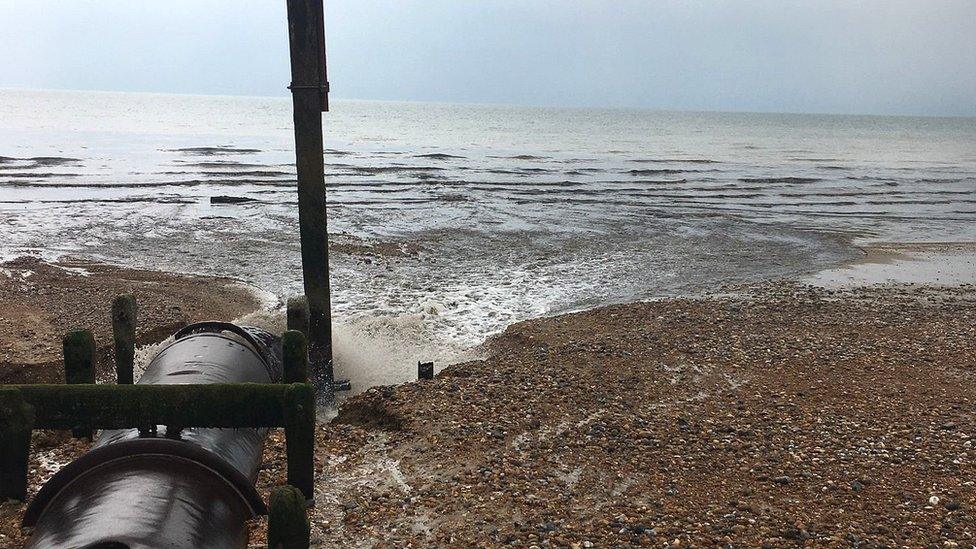
- Published9 July 2021
